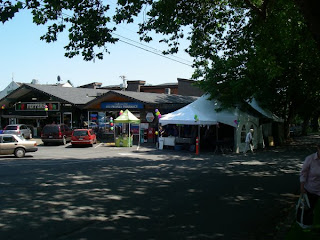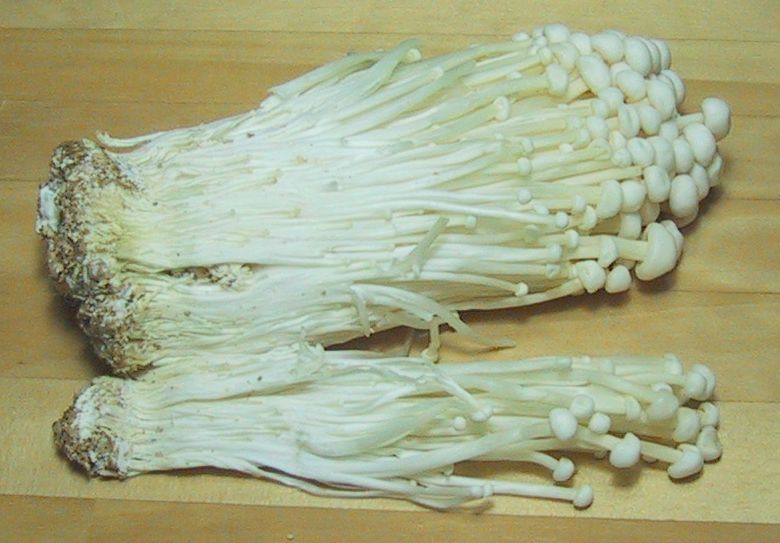So I got the opportunity this week to do one of my favourite things: getting behind the “Employees Only” door. On June 12
th, I was with a group of about a dozen and a half other members of the
UVic University 101 program got the opportunity to meet one of the founders of
Level Ground TradingCompany. Stacey Toews helped found Level Ground back in 1997 in order
to provide Fair Trade coffee to lower Vancouver Island. In the
beginning, they didn't even have a building to work from, instead
borrowing space from another company after their workday was over, in
order to roast and pack the coffee they were bringing in from
Columbia. Now in their third building and fifteenth year, Level
Ground has a compact, efficient space and about 25 employees.
 |
| Level Ground facilities |
Level Ground is now bringing in coffee
from about 5000 farms and 12 different producer groups in 8 different
countries, supplying a number of local retailers with both beans and
ground coffee.
Stacey is clearly still passionate
about the work he's doing. I inferred that a lot of what he does is
explain just what he does: talking about the business, he had a
casual command of both facts and concepts that he wanted to
communicate, and his delivery was both polished and personal. We
started the tour with, of course, coffee. Level Ground buys top-end,
shade-grown beans, roasts and packages them on-site, and apparently
have figured out a good grounds-to-water ratio, because I thoroughly
enjoyed my cup. Which, of course, was the point.
Stacey started our tour with a history
of the fair trade movement, the modern version of which is said to
have started about 65 years ago with
Edna
Ruth Byler, a Mennonite missionary. While on mission work, she found
herself in a village where the women were producing high quality
linen needlework. Six years later, she and a colleague, Ruth
Lederach, took some of the items to a Mennonite conference in
Switzerland and sold them, and by 1958 had opened a small shop. These
shops have become the Ten Thousand Villages stores found across North
America. In Victoria, Level Ground imports, roasts, grinds, and bags coffee for the Ten Thousand Villages shop.
In Europe, Oxfam picked up the ball in the mid-sixties and
ran with it, becoming the force behind the European fair trade
movement.
Both
the Mennonites and Oxfam were drawing on a much deeper and older
tradition. Gavin Fridell writes [pdf] that
“it
is difficult for
anyone in our present age to
imagine that at an earlier point in
world
history it appeared “unnatural” that one
person should
profit by denying others the
basic right to subsistence. Yet this
conviction was common amongst local
communities in pre-capitalist
societies
before the imperatives of the capitalist
market and the
new ideology of political
economy replaced the “old moral economy
of provision.” ”
Fridell links this pre-capitalist
moral economy with the modern fair trade movement:
“The greatest
virtue of fair trade lies
in its attempt to take advantage of its
market
niche to construct a new moral economy,
one which crosses
national boundaries and
re-asserts the notion of people’s right to
live
taking precedence over the flows of supply
and demand.
Whereas the old moral
economy described by Thompson asserted
the
rights of poor consumers to gain access
to the means of life, the
new moral economy
of fair trade asserts the right of poor
producers
to get a fair price for what they sell on the market.”
It is this “new moral economy of
fair trade” that Level Ground works in and that Stacey Toews is so
passionate about. The front of every package of Level ground coffee
has the face of a producer emblazoned on it—a producer who grew
some of the beans in the roast, GPS coordinates to the community
nearest their farm on the package, and who relieved a fee for the use
of his or her face. The goal is to produce a perceived relationship
between the producer and consumer, to make you think about where your
food came from.
And it wasn't until food became part
of the fair trade movement that it really became visible to the
public. Because of the central place food holds in all human
cultures. Level Ground is branching out into non-coffee items as
well, distributing dried fruit, chocolate, cane sugar (an excellent
sugar, primarily a dehydrated sugar can juice that leaves a great
deal of flavour with the sweet), and most recently, vanilla beans.
The “A” quality vanilla beans are being sold as beans, and the
“B” grade are being used to make extract. Level Ground is
partnering with a local vodka maker to create an authentic vanilla
extract, and early experiments seem quite promising, according to
Stacey.
Coffee also needs special handling when being picked.

As coffee is a berry when it is picked, beans must be de-pulped and washed within hours of being picked or it ferments, rots and is
valueless. Farmers must have access to a buying station or buying
post or their crop is worth nothing.
Level Ground is pursuing a project in
Columbia with an organic grower to purchase his sun-dried pulp (the
remains of the cherry) and make a tea from it. Apparently it is naturally quite
sweet tasting.
 |
| The roasting room |
But, according to Stacey, fair trade
remains an imperfect solution to the problems of ensuring producers a
fair price for their goods. While the fair trade standards set by a
German NGO (Non-Governmental Organization) provide for a minimum
price for various goods from different places, there is no guarantee
that the price flows all the way back to the original farmer rather
than a larger producer group. “So without a dialogue and
relationship with the producer group you can actually completely
dehumanize trade and call it fair at the same time by current global
standards,” Toews says. And points out that Nestlé in the UK now produces a two-finger Kit Kat bar that is fair trade certified.He sees the prices established by Fair Trade
certification to be akin to a minimum wage: The goal is not to pay
the minimum wage, but to pay more than that. When Level Ground
started trading, world coffee prices were $2 US / pound. Since then,
prices have fluctuated between a low of $0.45/lb and as high as
$3.10/lb.
 |
| Grinding and bagging station |
Currently at ~$1.75/lb, on the international market, Level
Ground is paying its suppliers for top quality export beans (green)
between $3 and $4 /lb depending on the country and producer group.
Keeping in mind that roasting reduces
the weight of beans (it takes, on average, 1.3 pounds of green beans
to get a finished pound of roast beans), there's a lot of product
moving through level Ground.
 |
| Distribution area--for ground and whole bean coffee |
|
From their first container load of green
beans, Level Ground is now working with 5000 farms, 12 different
producer groups, 8 different countries, 25 staff, and goes through
about 4 million pounds of beans a year.
 |
| Stacey Toews in front of green beans |
They store very little coffee on site. Warehouse costs are so much lower in Vancouver that they store their coffee there, only bringing it over a container at a time to roast and distribute.
 |
| Stacey with a handful of "coffee paper" |
Level Ground is also paying attention to their waste stream as well. The bags the green beans come in are a natural burlap that decomposes, making them a great mulch in local gardens. The "paper" that covers the bean and comes off during roasting is also recycled. With an aggressive recycling program, Level Ground generates very little actual "waste.
Level Ground also offers their employees a subsidy program, helping pay for the workers to commute by bus or by bike. And provide coffee to a number of non-profit organizations (including both Uni101 and The Rainbow Kitchen). Sustainability and responsibility take pride of place in the corporate vision, making Level Ground a most unusual business. Is it obvious I had a good time?









